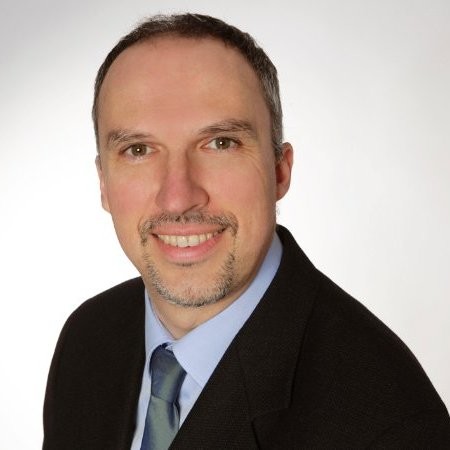Author: Ruggero Paraventi, PMP 
Lessons Learned: Enhancing Medical Device Development Through Experience
Having had the privilege of being part of the PMO leadership team in a global medical device company, I have witnessed the crucial role that a well-structured lessons learned process plays within the industry. In this article, I will share our journey in designing and implementing the lessons learned process, emphasizing key elements, challenges faced, and continuous process improvements.
The Essence of our Lessons Learned Process
The process that we implemented aimed to reflect real-world experiences and challenges in medical device development, which encompassed learning from both failures and successes. To further develop our process, we consulted literature in the domain, and found advice provided by Nick Milton, in his book “Lessons Learned Handbook” [1] particularly valuable.
Key Elements of the Lessons Learned Process and Tools
Definition of Lesson Learned
Upon initiation, we set out to agree a univocal definition for a lesson learned within our organisation. 'Lessons Learned' is a common term for almost every PMO, however, how it is defined and interpreted varies. We found Nick Milton’s definition of a lesson learned most useful - “a recommendation, based on analysed experience (positive or negative), from which others can learn in order to improve their performance on a specific task or objective.” Adopting a similarly clear, single description of a lesson learned paved the way in designing our process.
Identification and Capture
An initial challenge that we faced was that learnings were retrospectively collected at project closure, and in some cases, several months after critical events had occurred. Valuable knowledge had been slipping through the cracks. To overcome this, we introduced a requirement for project managers to ensure that team experiences were documented in a devoted section of their project diaries, as they occurred, throughout the entire project life cycle. Milton underscores the importance of this, stating that "recording experiences and learning is vital to a successful lesson learned process."
Storage and Organization
Owing to a lacking knowledge repository, no uniformity existed in how information was stored, making it difficult to retrieve and apply past lessons. Milton's advice on “organizing knowledge” deeply resonated with us. Establishing a structured repository, and defining meaningful categories for the learnings, ensured that future teams could locate and benefit from recorded knowledge from past projects.
Dissemination
Whilst Milton's perspective is that "lessons should be disseminated to those who need them", we found that our teams were sporadically sharing their lessons with others. To ensure that our process allowed for efficient dissemination, we increasingly emphasized the importance of sharing lessons learned with other teams. Lesson-sharing was added as a standard agenda item for single functional community meetings, such as global PMO meetings or engineering forums (for learnings of more technical nature).
Actionable Improvements
Following Milton's advice that "lessons should lead to improvements", actionable lessons learned were extracted from knowledge repositories as inputs for identifying process efficiency optimisation. In this way we ensured that lessons learned systematically translated into tangible improvements, including the streamlining of project execution. Ultimately, the structured repository of lessons learned became one of the major sources supporting the definition of cross-functional, continuous improvement initiatives within our organization.
Further Improvement of our Lessons Learned Process
After the initial implementation of the lessons learned process, an analysis and evaluation task were defined for the enhancement of the process. This was introduced because of the known benefits of continuous improvement. This task was assigned to a dedicated resource, skilled in both LEAN principles and process analysis methods.
To refine and further optimise the process, LEAN workshops were conducted using virtual collaboration tools to enable optimal participation of our global PMO community. These workshops allowed our lessons learned subject matter experts to identify bottlenecks and inefficiencies, brainstorm solutions and enhancements, and gather inputs for process effectiveness changes.
The Importance of Uniformity and Quantification
The consideration of LEAN principles guided us in the retrospective analysis, highlighting the importance of two major focal elements for streamlining our lessons learned process, namely Uniform Generic Formulation, and Quantification of Impact.
The importance of having a standardized, generic format for lessons learned was recognized, because non-standardized formulations hindered the effectiveness of transference of lessons learned from one project to another. Implementing a standard syntax ensured that every team could understand and apply these lessons uniformly, avoiding ambiguity and misinterpretation.
Further it was recognised, that only through the consistent impact quantification of lessons learned relating to time, cost, resources, or other critical factors, could a proper prioritisation of learnings be achieved. This in turn enabled the ordered adoption by other projects and continuous improvement initiative selection within the organization. This data-driven approach allowed us to focus our efforts on areas that delivered the most substantial improvements.
The Role of Dedicated Software Solutions
In our pursuit of continuous improvement, we also evaluated dedicated software solutions for storing and sharing lessons learned in an integrated manner. Tools such as these provide a structured platform for efficiently capturing, categorising, and sharing lessons within the broader organization, further enhancing the ability to leverage learnings in real-time. Common implementation of such software within affiliated medical device companies was explored, to identify value-adds in up-scaling learning dissemination and use amongst enterprises operating in similar business contexts.
Realizing the Full Potential
The ability to learn from experiences is clearly indispensable, in the medical device sector as in any other industry. Through the implementation of a refined Lessons Learned Process, tailored to specific organisational needs, we better positioned our teams to avoid common pitfalls, reduce errors, and prevent costly delays. Learnings from past failures and successes also began to generate process streamlining initiatives, expedite development, and reduce time-to-market. Through understanding of pitfalls and key elements of this process, and continuous refinement of the process through LEAN principles, the organisation became committed to the practical transformation of knowledge into action. Together with the future incorporation of technology, and further incorporation of past learnings into key risk management documents, this process lays the foundation for successful leveraging of past experiences.
A Heartfelt Thanks
I would like to extend my heartfelt thanks to Mrs. Rosablanca Paez, who led the continuous improvement efforts, and guided our PMO team through the LEAN workshops. Her passion, expertise, and dedication were instrumental in advancing our Lessons Learned Process.
References:
[1] Nick Milton, “Lessons Learned Handbook – Practical Approaches to Learning from Experience”, Elsevier Science & Technology (2010)






